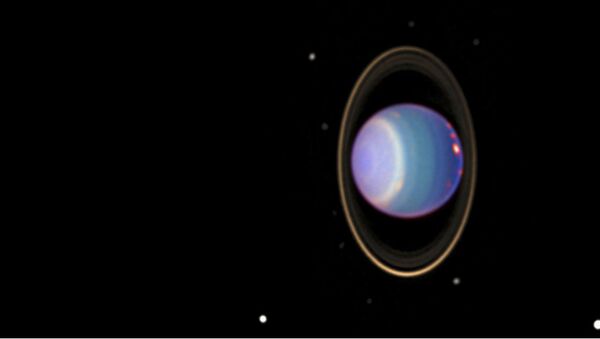MOSCOW, November 14 (Sputnik) – A team of astronomers from the University of California, Berkeley have observed extremely bright storms on the face of Uranus. The results of the observations have been published this week in the university news bulletin, UC Berkeley News Center.
The researchers say they first looked at the planet on August 5 and 6 using the W. M. Keck Observatory in Hawaii and then observations were carried out by an expanded team led by Kunio Sayanagi of Hampton University using the Hubble Space Telescope on October 14.
“The weather on Uranus is incredibly active,” said Imke de Pater, professor and chair of astronomy at the University of California and leader of the team that first noticed the unusual activity.
In August, the astronomers saw eight separate, very large storms in the northern hemisphere of Uranus. They say one of those storms was the brightest ever observed on Uranus, and represented 30 percent of all light reflected by the entire planet at the 2.2-micron wavelength.
Uranus experienced a period of powerful storms and huge cloud systems in 2007, when sunlight was hitting the planet squarely on its equator during its equinox, an event that transpires once every 42 years.

When amateur astronomers heard about the activity, they turned their telescopes towards the planet and were amazed to see a bright blotch on the surface of the normally dull blue dot.
Uranus is an ice giant, about four times the diameter of Earth, with an atmosphere of hydrogen and helium, with just a bit of methane to give it a blue tint. Because it is so distant – 19 times farther from the sun than Earth – astronomers were able to see little detail on its surface until adaptive optics on both Keck Observatory telescopes revealed features much like those on Jupiter, reads the bulletin.



